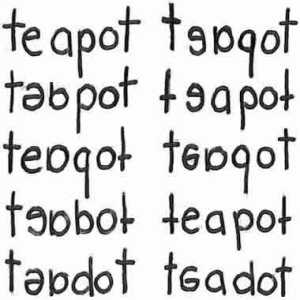 What is dyslexia and how can we help Japanese people to get/give support?
by Naoko Nemoto
What is dyslexia and how can we help Japanese people to get/give support?
by Naoko Nemoto
created on Sep 26, 2017 modified on Nov 29, 2017 05:06
In Japan, dyslexia is not known well yet. The vast majority of the Japanese people had never heard of the word until very recently. Some say that dyslexia is underdiagnosed in Japan due to its transparent orthography. Some say that when Japanese children with dyslexia start learning a foregin language with opaque orthography such as English, they exhibit symptoms, but most often they are simply dismissed. On the other hand, in American schools, dyslexia is a well-recognized learning difficulty and various kinds of support are available.
The purpose of this project is to help newcomers from Japan to understand what dyslexia is and how to get/give support in American schools. Given that dyxlexia itself is not well-known and its support is not likely to be available in Japan, in addition to neither students nor parents speaking English well, it is difficult for them to find resources.The final product will be an educational video clip that will be uploaded on the web. Therefore, the messages on this video could reach beyond the local area. Learners will first show the video to the live audience, namely Japanese children and parents in the local Saturday Japanese school and receive feedback from them before uploading it on the web.
While we cannot prevent dyslexia, we can contribute to reduce misconceptions and prejudice against people with dyslexia. Diversity and inclusion is one of the primary educational goals today. Our college provides good support for students with learning difficulties, including dyslexia. Since our students have learned Japanese orthography as adults (with some difficulty), I expect them to be able to provide perspectives distinct from those of native speakers of Japanese adults who learned Japanese orthography as children without much difficulty.
During this project, learners will actively investigate the Education and Training career cluster's Teaching and Training pathway by pursuing the following knowledge and skills described for this pathway: ESS01.02.02 adapting language for audience, purpose, and situation; ESS02.07 Interpreting verbal and nonverbal cues/behaviors to enhance communication with client/participants; ESS 02.08 applying active listening skills to obtain and clarify information; HU3.1 providing services that are sensitive to cultural and disability issues.
Career Pathway Education Teaching Training
Learners will first engage in sustained inquiry about the Japanese orthography and how that compares with English orthography with respect to dyslexia as well as investigating social issues on dyslexia. They will, then, explore what kind of support for students with dyxlexia is available in local schools (Western Massachusetts), including their own college. Prior to creating a video, they will visit a local Japanese Saturday school to conduct interviews with students and/or parents from Japan to examine how much they know about dyslexia and what misconceptions they might possess.
This project will enhance learners' skills to use available technology such as Google translator, Rikaichan, and Reading Tutor, to supplement their reading and writing skills in Japanese.
1. Presentational language - Learn how to make a formal presentation more detail
2. Interview language - Learn greetings and language that are used in interview more detail
3. Formal e-mail writing - Learn how to write formal e-mail more detail
4. Different orthographies in the world - Categorize orthographies in the world. more detail
1. Introduction to the project - Overview of the project more detail
2. Experience simulated dyslexia world - Entry event to launch the project more detail
3. Mechanism of reading - Find out how human reads more detail
4. What is going on? Why do we care? - Find out what kinds of issues people with dyslexia are dealing with more detail
5. What style of language should be used for our video? - Analyze different language styles used in professionally made video clips more detail
6. Japanese orthography experience (individual video) - Creating a video clip to share one's own experience more detail
7. Common symptoms of dyslexia - Find out common symptoms of dyslexia and share what you have found with classmates more detail
8. Orthographies and dyslexia - Analyze the relationships between orthographies and dyslexia more detail
9. Preparation for interviews with the audience - Prepare to conduct interviews with students/parents of the Saturday Japanese School more detail
10. Interview: Get to know the audience - Meet the audience (students/parents of the Saturday Japanese school) more detail
11. Dyslexia support in American schools - Meet a local expert to find out what is available more detail
1. Organize ideas and timelines for the video - Discuss what contents should be including in the video more detail
2. Scripts of the video - Write the scripts of the video and Power Point slides to be used in the video more detail
3. Create a video clip - Shoot video more detail
4. Screening of the video with the live audience - Show the final product to the live audience more detail
5. Finalize the project - Self-reflect the screening with the audience and the process of the project more detail
1. Assessment 1 : Individual video - Teacher's assessment and peer assessment of the individual video assignment more detail
2. Assessment 2: Interview preparation - Assess the relevancy and language accuracy of the interview questions and organization of the interview more detail
3. Assessment 3: Information conversion - Assess how well learners can utilize dictionaries and help from native speakers more detail
4. Assessment 4: Video scripts - Assess the scripts for the video more detail
5. Assessment 5: Video creation and presentation - The video clip and its presentation assessment more detail
6. Assessment 6: The final product - The web version will be assessed by peer and instructor more detail
7. Teamwork Assessment - Reflect the project by giving peer assessment on Team work more detail